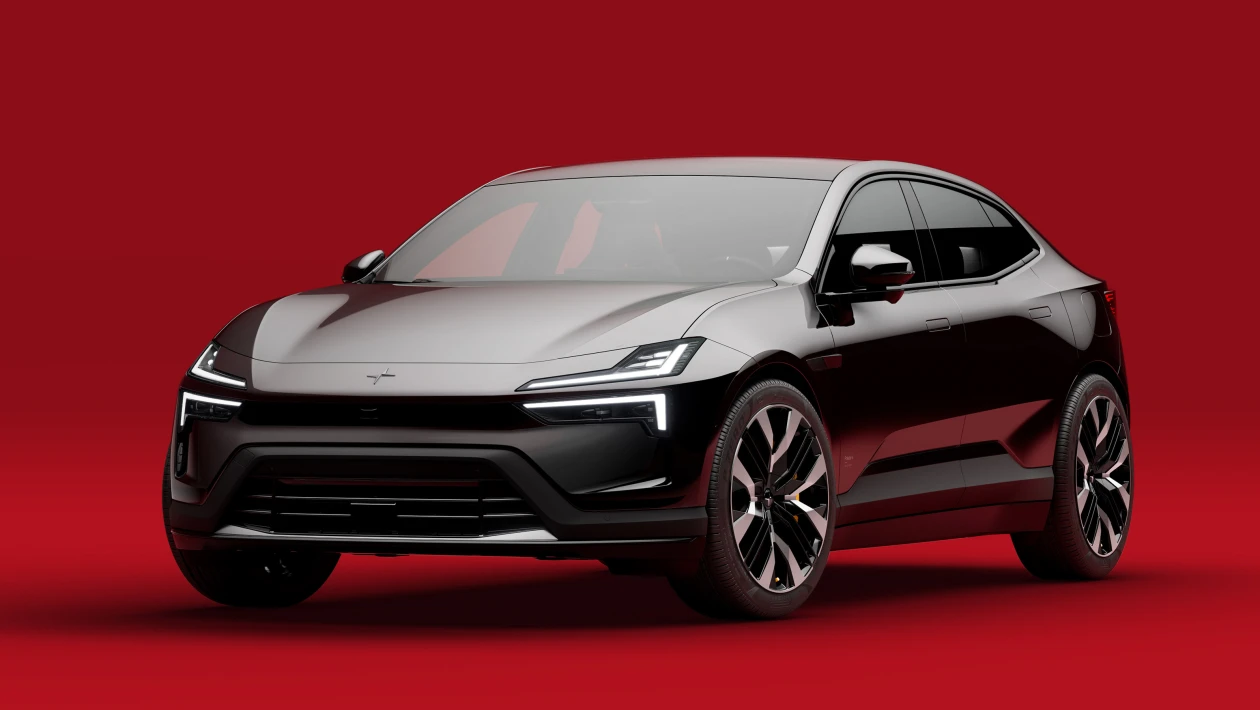Polestar’s newest model is expected to be priced competitively and at a much lower price than the Polestar 3 when it lands in Australia.
The Polestar 4 is expected to become the brand’s biggest-selling model when it goes on sale in 2024. Suggested pricing from CEO Thomas Ingenlath also suggests it will be near the BMW iX1, which starts from $84,900 before on-road costs in Australia.
The Polestar 4 will have to impress on a global scale too, especially with Polestar viewing itself as a ‘global company’ thanks to a grounding in Sweden, an engineering base in the UK and production facilities in China – not to mention a listing on the NASDAQ stock exchange in New York.
Ingenlath – the former design director of Volvo – is very clear about how his two new SUVs will cover the premium SUV market. “Polestar 3 will start at £79,000,” he tells us. “£55,000 is where Polestar 4 will start. It will be a very important part of our portfolio, enabling more people to experience Polestar.”
While pricing is given in British pound sterling, the suggested “£55,000” is close to the starting price of the BMW iX1 in the UK. That model costs $84,900 before on-road costs in Australia. The Kia EV6 GT meanwhile starts from over £60,000 – and is priced at $99,590 before on-roads here. It all points to the Polestar 4 being priced under $90k in Australia once the model lands next year – and indeed the Polestar 3 has a much higher price tag at $132,900 locally.
Missoni describes the 4 as “a complementary design to the Polestar 3”. With its lower nose, slimmer lights, flush glazing and retractable door handles, it’s another strikingly handsome design, with clear influence taken from the Polestar Precept Concept car first revealed in 2020.
The design doesn’t come without some controversy however. The polarising point is the lack of a rear window. Instead, the car relies on cameras and mirrors to give a view to the back. “It allows more second-row headroom and a more dramatic rear,” Missoni told us.
How customers will react remains to be seen – Polestar hasn’t run any customer clinics to gauge reaction, with Ingenlath insistent that it’s not something Polestar does as part of its design process.
The benefit inside the 4 is clear, and we had the chance to sit in the back of the new car, where the lack of rear glass isn’t apparent; the view upwards and forwards thanks to the long glass roof is spectacular. Yet headroom is as good as the designers intended, with impressive kneeroom and decent boot space. Although the 4839mm-long Polestar 4 is only around 200mm longer than the Polestar 2, the difference in the accommodation inside is vast.
Other than the rear view, the cabin is a triumph of design and quality. “It’s inspired by fashion,” Missoni told us, “using soft, cocooning, sustainable materials.”
Sitting ahead of the driver is a 10.2-inch instrument screen, with a landscape 15.4-inch Google-powered touchscreen in the centre. Over-the-air updates will keep the infotainment and drive systems fresh, too. Polestar will fit its latest safety systems to the 4, with 12 cameras, plus radar and 12 ultrasonic sensors.
The dash is minimalist, with Google’s voice control expected to take care of many functions. Clever use of textiles and lighting gives it an upmarket feel inside, with a wide variety of materials on offer, including a recycled knitted fabric produced with a textile college in Sweden. Polestar has said a sustainable alternative to leather should be found, although the 4 comes with ‘welfare-secured’ Nappa leather.
The Polestar 4 doesn’t get the SPA2 platform like the new Polestar 3 and Volvo EX90. Under the skin, the 4 will sit on a new-to-Polestar platform from parent company Geely, called Sustainable Experience Architecture. The SEA platform has already been utilised in fellow Geely brand, Zeeker for its 001 car.
Full technical details are some way off, but the new platform allows for rear or all-wheel drive, a long-range 102kWh battery, up to 395kW and 686Nm from the dual motors, and a target range of up to 563km. Fast charging at up to 200kW will be offered, plus bi-directional charging, which will let you power items from the vehicle. We expect a heat pump will be standard.
This is Polestar’s quickest production car, too, with a best 0-100km/h time of 3.8 seconds, while we’re told that ride comfort – so far a Polestar foible – has been a bigger priority.







